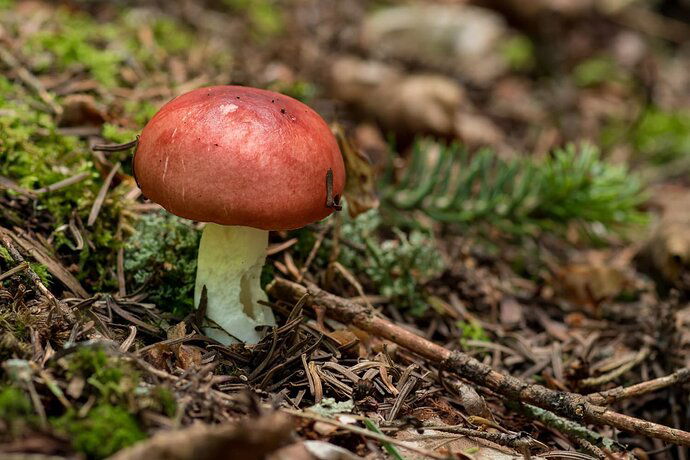So I’m dropping this here because I’m curious if you guys plan or have ideas for where you want to take an aspect of your photography. I’m a mushroom fanatic and am so glad that ‘if it grows it goes’ is how Flora works around here. Just warnin’ ya now…I do have to take a picture of every mushroom I see. ![]()
This is a favorite from a couple of years ago…a little russula naturally semi-spotlit on the forest floor. While I most often use natural light for all my mushroom shots, this year I’m adding a Lume Cube LED panel to the mix as well as photo stacking. Neither have I done with 'shrooms so it’s new in the sense of the subject. Last year I paid for a webinar that was all about mushroom photography techniques and both of these areas were touched on and I’m excited to add them to my process.
One aspect of fungi photography that I struggle with…well maybe struggle with isn’t the right word. That I vacillate with is clean up or gardening. This image is one of the messier ones in my portfolio and I deliberately left it that way. I had my hand poised to move that stick and then decided not to. Sure I could have shot with and with and without it, but I got irritated with myself at having to pick off every pine needle and twig in the area before taking a picture. Oy vey. When is enough enough?
Well…that’s it. Just your average obsessed photographer rambling.




